Often on the beds of summer residents you can see thick green feathers of onions, which differ in appearance from the greens of onions. This is a onion-batun, this type is grown mainly for juicy and fragrant greens.
Material Content:
Russian winter onion-batun - grade description
Under the climatic conditions of the Russian latitudes, a frost-resistant variety called “Winter Russian Onion Batun” ripens well.
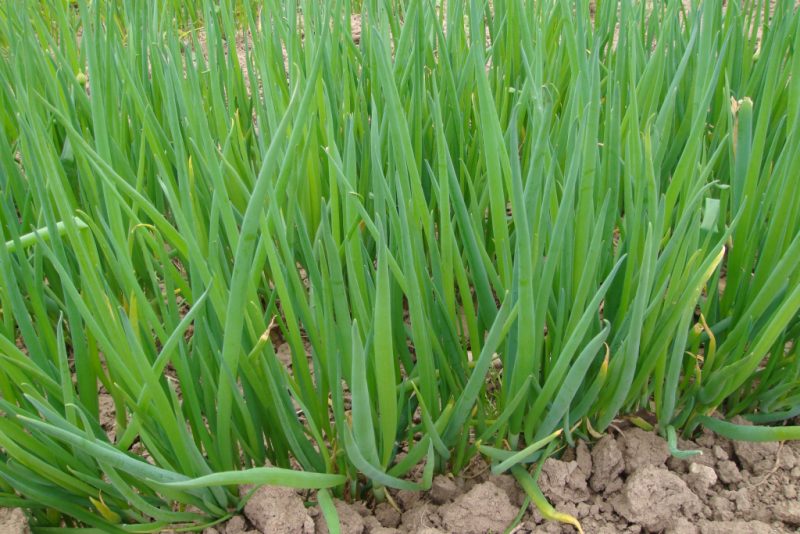
Valuable qualities of this variety:
- good yield;
- frost resistance;
- long period of return of the green pen;
- resistance to diseases and pests;
- feather aging about 1 month;
- during the summer, one onion gives 3 slices;
- in one place can grow up to 5 years.
Mistresses note! The feather of this variety does not coarse for a long time and tolerates freezing well.
Growing onion from seeds
Growing onion-batun can be done in two ways. One of them through seedlings, this is justified in regions where summer passes in a short time, and planting in open ground is possible only in May.
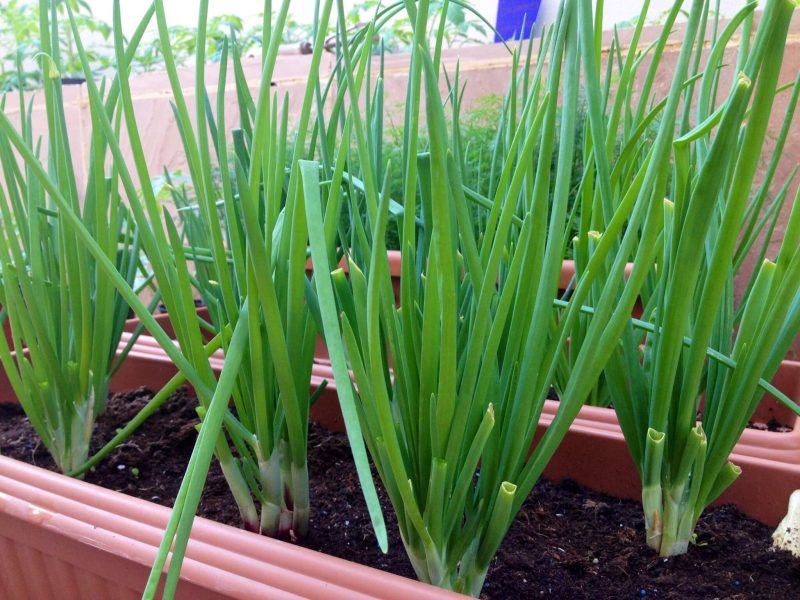
- Sowing time is the end of March - the beginning of April.
- Onion seeds should be soaked in a disinfecting solution for 8 hours. After that, they need to be removed from the solution and dried a little.
- The soil for young shoots should consist of a loose mixture, peat shop land for seedlings is best suited. Although it will be useful to add vermiculite for greater friability.
- Seeds extracted from the solution can either be sprouted on a damp cloth, or immediately planted in the ground. In principle, germination can be skipped if there is not enough time. Experienced gardeners are advised to use plastic tweezers when planting seeds for convenience.
- The distance between the planting holes should be about 2.5 cm.
- Planting depth 1 - 1.5 cm.
- After planting, seeds need to be watered, it is possible with a solution with growth stimulants.
- Sprinkle with dry soil and cover with a perforated film. Before covering with a film, the soil on top can be slightly sprayed with water to create the necessary humidity.
- After the first shoots in the daytime, the film must be removed, gradually hardening the onion, and then remove it altogether.
Features of planting seeds of onion-batun
For better seed germination, you should first check the seed. To do this, pour the seeds into a container with warm water and leave for 6 hours. After that, only those seeds are planted that have sunk to the bottom, free-floating will have to be thrown away.
It is important to know that the onion-batun can be planted directly in the open ground.
It is only necessary to observe several conditions:
- warm weather should be established;
- the distance between future bulbs should be at least 30 cm;
- for better germination, add vermiculite, sand and peat to the planting ridge or fill the seeds when planting with a peat mixture for seedlings.
How to care for seedlings
Seedlings need to be provided with a sufficient amount of light, the southern or western window is considered to be a good arrangement of seedlings, and onions grow well under phyto-lamps.
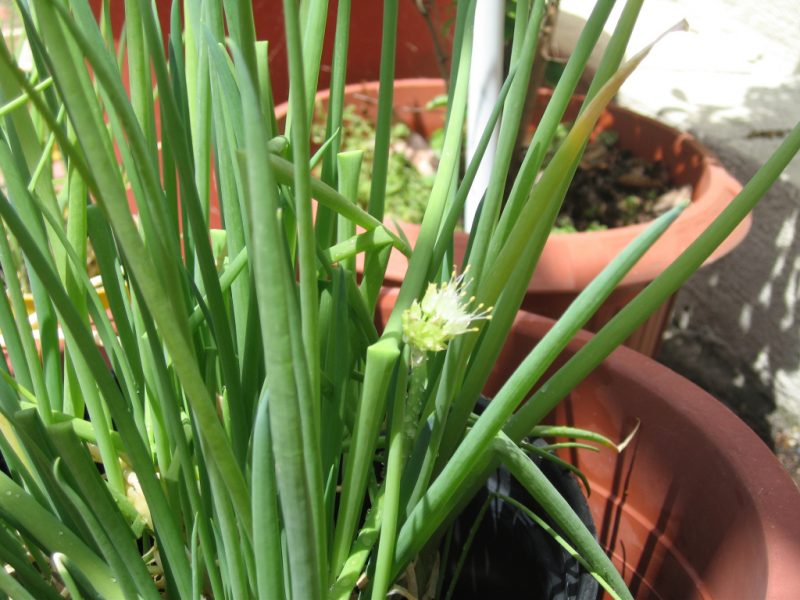
- Watering young shoots is necessary after the top layer of soil has dried.
- Onion-batun loves spraying, only it is better to carry out such a procedure in the evening and make sure that there are no drafts.
- Pierce the top layer carefully, or loosen it to allow air to enter.
Planting seedlings in open ground
You can transfer seedlings to the garden at the moment when it reaches 10 cm, if weather conditions permit.
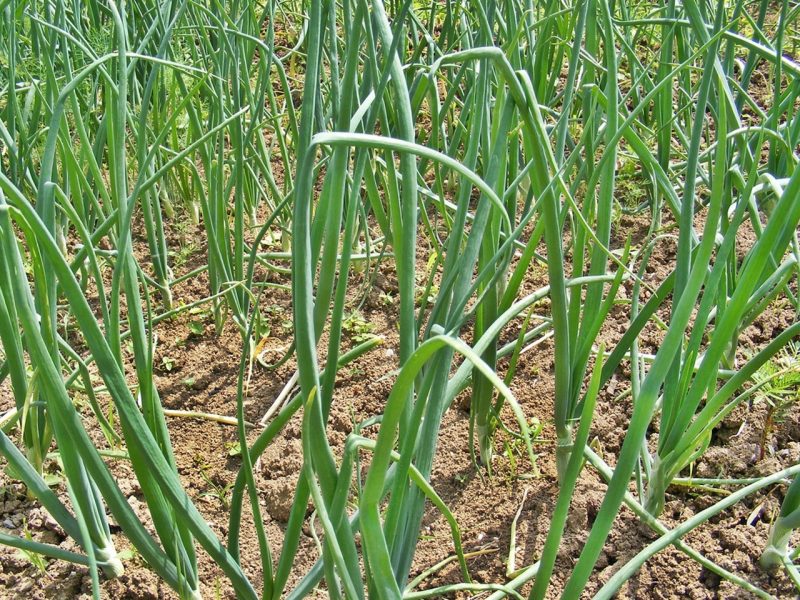
- The preparation of the planting ridge involves loosening and applying organic fertilizers according to the following recipe: compost 1 bucket + manure 1 bucket + sand ½ bucket + ash 500 gr. This mixture is enough for a bed 60 cm wide and 1.5 meters long.
- Before transplanting, it is necessary to water the soil layer with biofungicides.
- Transplant in dry and warm weather.
- After planting, onions need to be abundantly watered and soil should be added if it settles.
It is important to remember that it makes no sense to transplant weakened plants, so if some bulbs have sprouted poorly, then it is better to use greens immediately for cooking.
Outdoor onion care
In order for the vegetable to bear fruit throughout the warm season, you should know the basic rules for caring for it.
Watering the rod
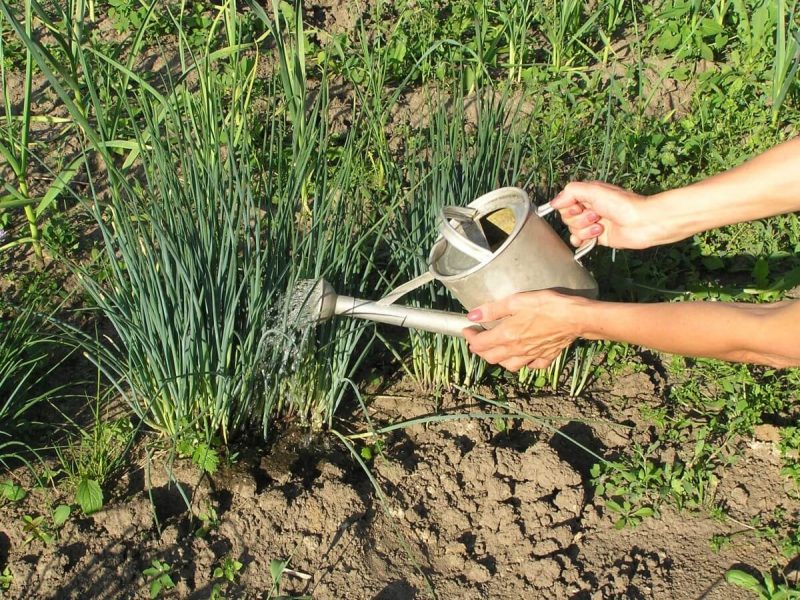
- Water the onion with warm, settled water.
- When watering after planting, you can add growth stimulants to the water.
- Water the plant in the evening before sunset or early in the morning, but so that drops of water do not fall on the leaves.
Weeding and cultivating onions
Weeding the onions is a must. Weeds attract a large number of pests, and also take a lot of nutrients from the soil due to a well-developed root system.
Loosening should be carried out carefully so as not to damage the bulb. It is best to loosen in the aisle.
Fertilizer and fertilizer
The very first and most important feeding of onion is made before the planting of the vegetable. The section “Planting seedlings in open ground” says how to fertilize the soil. And you can also add phosphates.

But with the help of fertilizing, you can adjust the growth of greenery, as well as to ensure that you collect seeds of your own production:
- 250 g of ammonium nitrate and 120 g of potassium soda, dissolved in 12 liters of water, will give a good increase in feathers;
- if superphosphates are added in the summer, good peduncles are formed, but it is better to do this on a separate ridge planted specifically for seeds, because the quality of the greenery will be unimportant;
- Before winter, 420 g of superphosphates and 210 g of potassium chloride should be laid in the aisle.
It is worth remembering that onions are very fond of organic soil, so if you can, then in the autumn you need to add as much rotted manure as possible.
Care for the next year's and the next
Onions in one place can grow for several years in a row. Vegetable care takes place according to the same scheme, only the planting method can differ.
It is important to know that it is good for a vegetable to have tomatoes or zucchini as its predecessors.
Harvesting and storage
Harvesting can be done several times a season.
It is important to cut the green onion feathers correctly, even if you need a few feathers to dress the salad. Onion leaves can not be plucked off, they are cut off either with scissors or with a sharp knife.
And also remember that you can start cutting only when the leaf length reaches 25 cm, if you cut the younger stems, the plant will greatly weaken.

Storage of bulbs of this type of onion is impractical, because the diameter of the onion is small, the taste is quickly deteriorating.
But greens can be saved in three ways.
- Freezing Chop fresh herbs, pour into a container or bags for freezing and send them to the freezer.
- Drying. Finely chopped greens can be dried either in a cool, shady place, or in the oven, heated to 30 degrees.
- Salting. Onion and salt are poured in layers in a sterilized jar, this seasoning can stand for a long time in the refrigerator.
If there is a place in the house in order to place a couple of bulbs in a pot on the windowsill, then you can transplant the strongest shoots from the garden into a flower pot to provide the family with fresh herbs. Sometimes the fruits can be harvested before the spring crop.
Gardeners take note of another early variety that can sprout in April already - this is the April Onion-Batun.












